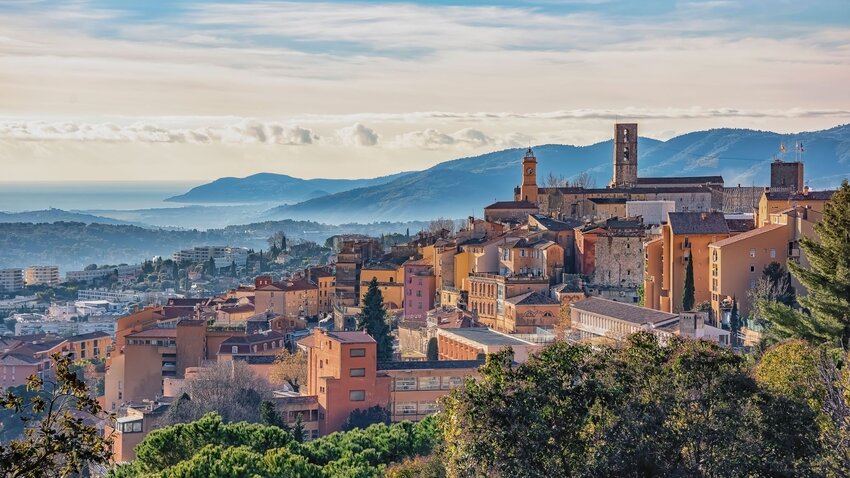The Cote D'Azur is much more than superyachts in Saint-Tropez. Discover medieval hilltop villages, spectacular Alpine hikes and rainbow-colored towns. Here are eight lesser-known destinations on the French Riviera to consider adding to your itinerary.
Villefranche-sur-Mer
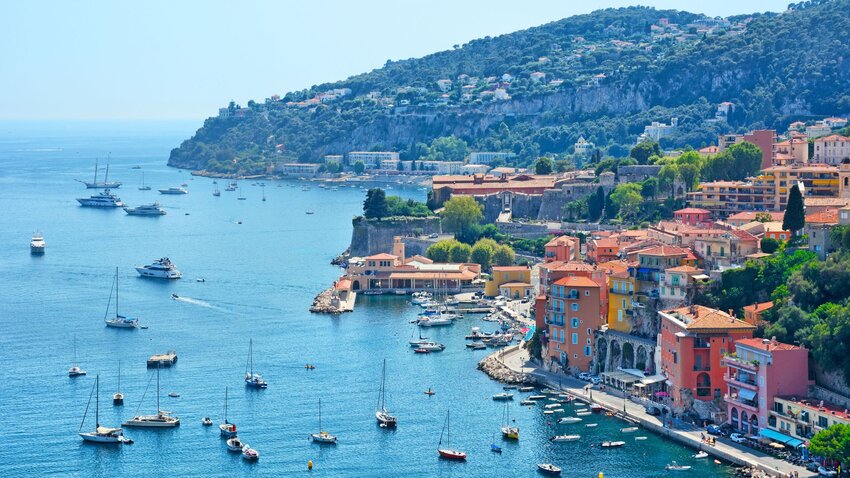
A pastel dream of a fishing village complete with hidden streets, an enchanting old town, and one of the world’s most spectacular bays, Villefranche-sur-Mer offers charm, history, and beach fun. Paddleboarding has exploded in popularity here in recent years, thanks to the sheltered, crystalline waters of Villefranche Bay, one of Europe’s deepest natural harbors. Enjoy open-air cinema atop the Citadel in summer months — the fortress was built in 1560 under the rule of the Dukes of Savoy. Discover the tiny but perfectly formed Saint-Pierre chapel, entirely decorated by 20th-century French writer and artist Jean Cocteau. Or, lose yourself climbing the old town’s meandering streets. Then enjoy a meal under a glittering Mediterranean night sky at Les Garçons restaurant or an aperitif at one of the town's many wine bars. Villefranche is easily accessible by a quick bus or train journey from Nice.
Èze Village
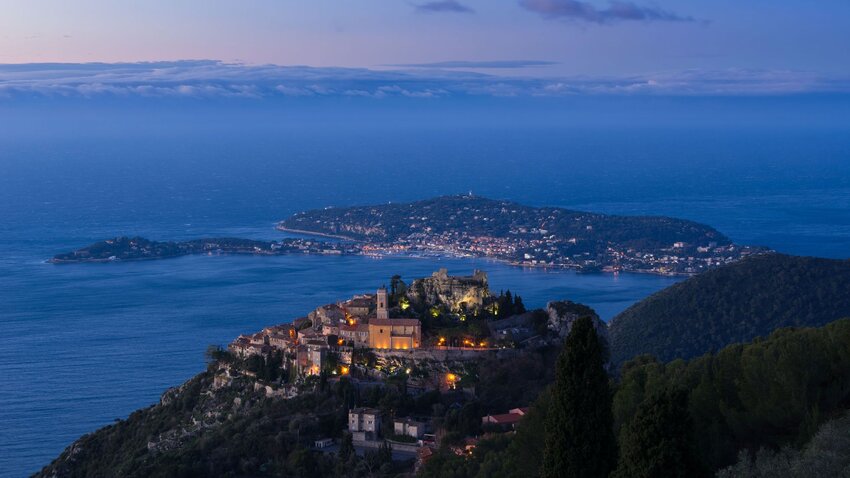
A 1,000-year-old medieval village perched impossibly on a cliff face outcrop and 1,300 feet above sea level, its cobbled, the winding streets will charm you and the sweeping views over the French Riviera are well worth the journey. Èze is without a doubt one of France’s most picturesque villages; within this magical hillside is Le Château du Chevre D’Or, where you can take a peek over the ancient wall to glimpse the famous hotel’s sculpture gardens. Entrance into the Jardin Exotique is six euros and for this price, you’ll enjoy thrilling vistas particularly of the Esterel Mountains and, if conditions are right, as far as the island of Corsica. Climb the steps to survey the ruins of the Château d’Èze, razed to the ground in 1706 on the orders of Louis XIV (The Sun King) during the Spanish War of Succession. Escape the heat of the day with a visit to Notre Dame de l'Assomption, a neoclassical-style church with baroque interior decorations.
Saint-Jean-Cap-Ferrat
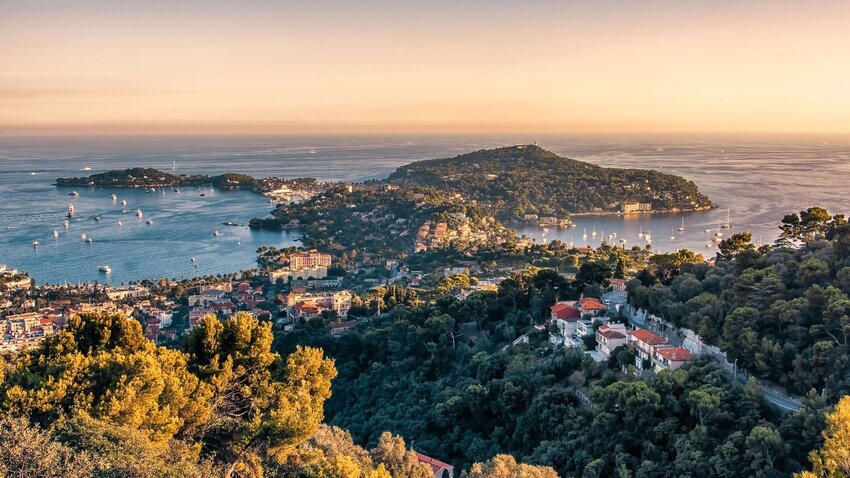
Once a site for farmers to graze goats and sheep, Saint-Jean-Cap-Ferrat is now home to some of the world’s most expensive real estate and a favorite mooring for superyachts. The good news is you can enjoy it for free. A coastal path hugs Saint-Jean’s perimeter past idyllic villas, inviting coves, and secluded beaches. Visit the iconic Paloma Plage, which may look familiar, since it’s a popular location for film and TV. Dive under clear, azure waters to float over endless meadows of seagrass and breathe in the scent of warm marine pines. The perfect soundtrack for the journey? The Rolling Stones’ Exile on Main Street. (The album was written while the group resided in Villa NellCote.) Another itinerary must is the stunning Villa Ephrussi de Rothschild and its lavish gardens, once home to the eccentric Baroness Béatrice de Rothschild.
Saint-Paul de Vence
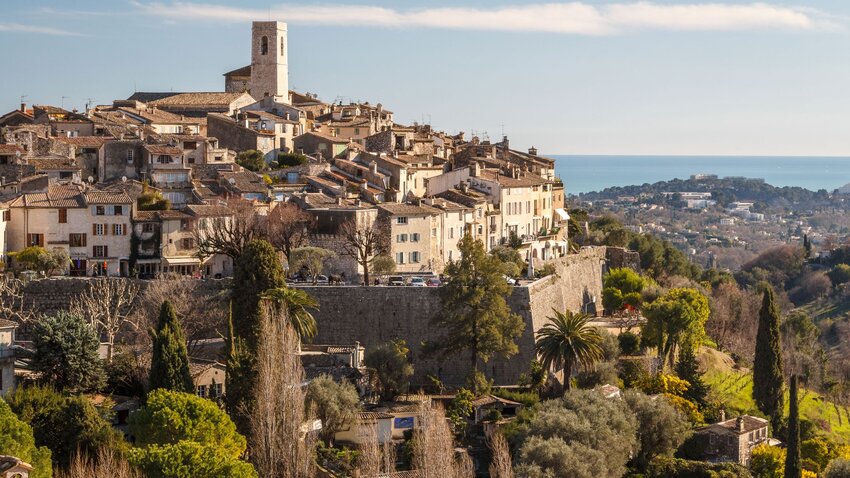
An artistic mecca wrapped in a walled, antiquated village with exhilarating views from the Alps to the sea. Home of the Colombe D'Or, a mythic hotel with an astounding collection of modern art, you’ll find works by Picasso, Matisse, Braque, Léger, Calder, César, and more. Artist Marc Chagall also spent close to 20 years in Saint-Paul— you can visit his final resting place in the peaceful cemetery overlooking the Mediterranean. Further along the road in the village of Vence, find yourself inside a Matisse masterpiece at La Chapelle du Rosaire de Vence, also known as Matisse’s Chapel. Everything here was meticulously designed by Henri Matisse, from the architecture and stained-glass windows, to even the priest’s vestments.
The Lerins Islands
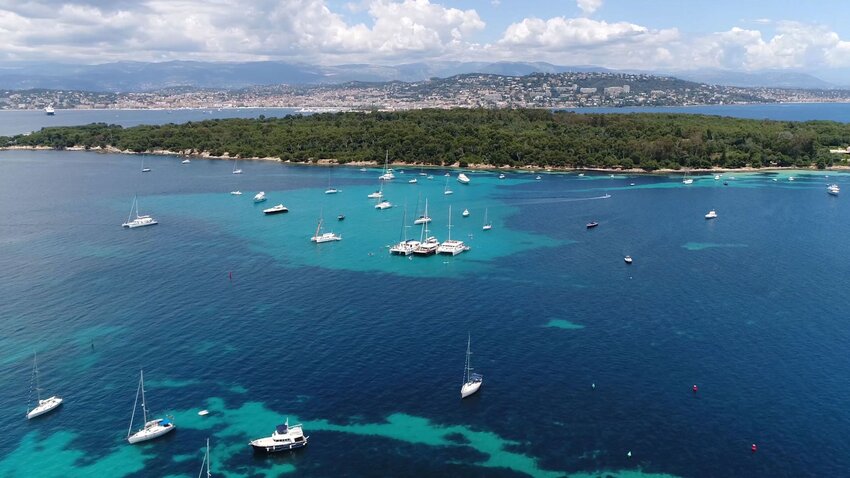
An archipelago of four islands located near Cannes – where Île Sainte-Marguerite is the largest – relax on secluded beaches, traverse shady pine and eucalyptus forests, or visit Fort Royal, where the legendary ‘man in the iron mask’ was imprisoned. Just below the waves and to the south of the island lies an ecomuseum featuring six submerged statues rising from the seabed, accessible to divers and snorkelers. On Île Saint Honorat, listen to the transcendent music of the monks in even song at the wine- and olive oil-making monastery. The island is owned by the Cistercian Order and it is said that Saint Patrick, the Patron Saint of Ireland, was educated here in the Fifth Century. There is so much to discover on these paradise isles that are just a ferry ride away from Cannes, Antibes, and Nice.
Alpes-Maritimes
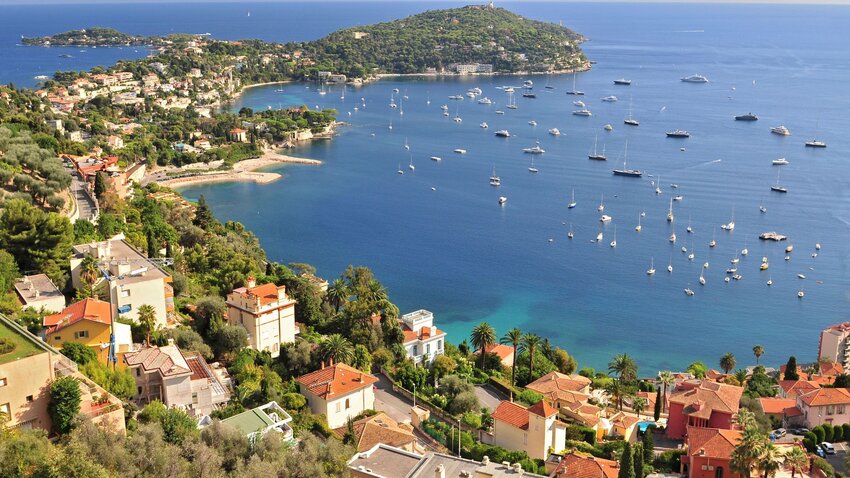
Snow might not be the first thing that comes to mind when you think of the Côte D’Azur. But the Alpes-Maritimes that rise high above the Mediterranean offer fantastic, family-friendly ski stations in winter, such as Auron, Isola 2000, Valberg, and La Colmiane. Little ones as young as two years old can learn to ski at Piou Piou ski schools. Time it right in the season and it’s quite possible to ski in the morning and paddleboard in the sea come afternoon. When the snow disappears, over 4,350 miles of hiking trails are revealed. Le Brec D’Utelle is a seven mile out-and-back trail starting from the hilltop village of Utelle, Alpes-Maritimes. From there, climb to a slender rocky summit 5,263 feet above sea level, where you’ll enjoy epic panoramas from the Mercantour mountains to the glistening waters around Le Cap D’Antibes.
Menton
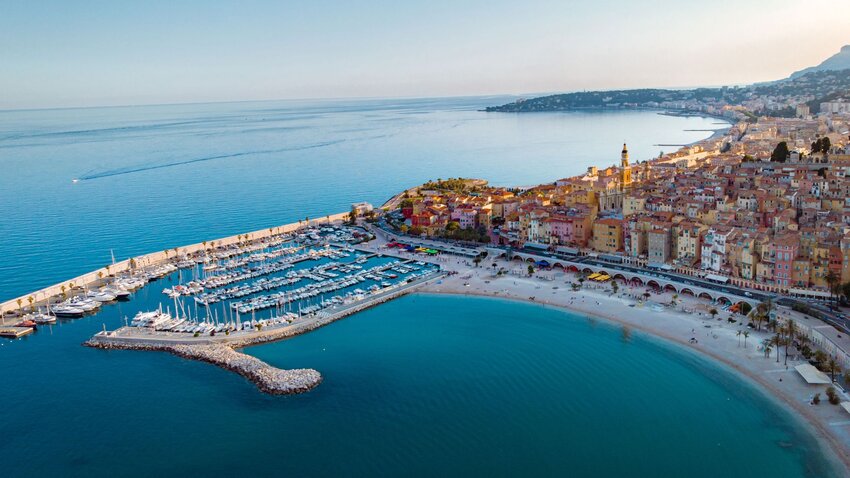
This rainbow seaside town bordering Italy is famous for its lemon festival in February, featuring floats, performers, and marching bands, and incredibly, all the floats are constructed using lemons and oranges. Giant fruit sculptures measuring up to 32 feet tall and weighing as much as 15 tons make for grand citrus showstoppers in the Biovès Gardens. Menton became a popular winter resort in the Victorian era, when wealthy English aristocrats would come and ‘take the air’ for health benefits. Today, Menton is a thriving beach resort with a charming, old town bursting with color. Visit the Basilique Saint-Michel Archange or wander Les Halles market to immerse your senses in the flavors, sights, and smells of the Mediterranean. Here, you’ll find local delights like barbajuans, pichade, and socca, a delicious chickpea flatbread famous from Italy’s Ligurian Coast to the Côte D’Azur.
Grasse
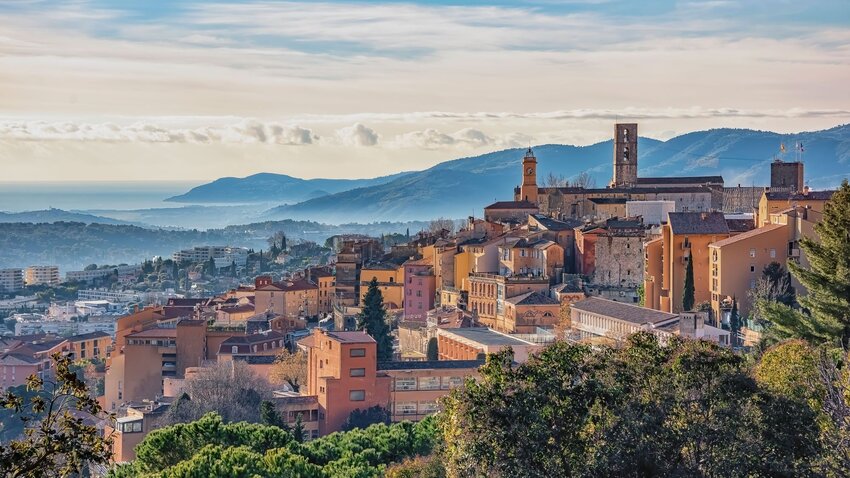
The world smells sweeter here, as Grasse is famous for being the world’s perfume capital. Chanel, Louis Vuitton, Hermès, and Dior have long sourced florals and botanicals from the Pays de Grasse with the latter even acquiring le Château de la Colle Noire in 1951, his adored Provençale retreat where he found inspiration as a perfumier. Maison Dior still relies on Grasse's unique climate and terrain, ideally located between sea and mountain, to cultivate fragrance essentials like may roses and jasmine. The International Perfume Museum in Grasse is open to the public across two sites; explore the history of fragrance through the ages at the museum situated in the town center and breathe deep the intoxicating scents of rose, jasmine, lavender, and orange blossom in the museum’s conservatory gardens in Mouans-Sartoux. Then create your own fragrance at one of the three local parfumeries: Fragonard, Molinard, or Gallimard.

